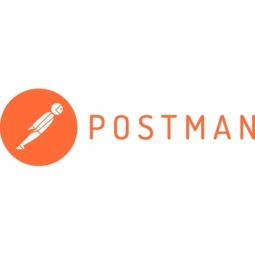Customer Company Size
SME
Region
- America
Country
- United States
Product
- Postman Pro
Tech Stack
- React
- Scala
- Cassandra
Implementation Scale
- Enterprise-wide Deployment
Impact Metrics
- Productivity Improvements
- Digital Expertise
Technology Category
- Application Infrastructure & Middleware - API Integration & Management
Applicable Industries
- Education
Applicable Functions
- Business Operation
Services
- System Integration
About The Customer
Coursera is an online education platform that partners with top universities and organizations worldwide to offer courses online. The platform supports over 17 million learners, 1700+ courses, and 140+ partners. Coursera pioneered the concept of MOOCs (massive open online courses) in early 2012 with the mission to provide universal access to the world’s best education. The platform caters to two sets of users - learners and university partners. While learners can choose courses across different domains, the partners seed the ecosystem with fresh course content. Coursera has dedicated engineering teams attached to these sets of users, building the product in a service-oriented architecture.
The Challenge
Coursera, an online education platform, has experienced a massive proliferation of APIs due to its service-oriented architecture. The platform caters to two sets of users - learners and university partners. Each product feature built for the learner side has a corresponding administration feature on the partner side, resulting in hundreds of APIs. In 2015, Coursera underwent a significant growth phase, transforming their learner side product based on user feedback. However, this rapid innovation required a dedicated operations team to help partners quickly upload new content to meet the increasing demand in learner courses. The operations team often had to request engineers to manually update the content every time partners wanted to change or add something to their courses, leading to potential productivity drops.
The Solution
To address this challenge, Coursera adopted Postman Collections for critical endpoints. Postman's user-friendly GUI made it an ideal tool for the operations team, who could use these Collections to complete their tasks with minimal knowledge of REST internals. This approach empowered the operations team to support partners, breaking the time-sensitive dependency on engineering. Engineers could share a set of well-documented endpoints that were guarded by validation and internal-only auth rules. These Collections were defined early in the development cycle, serving as an agreement between front end and back end developers. This solution not only improved operational efficiency but also reduced interruptions for the engineering team.
Operational Impact

Case Study missing?
Start adding your own!
Register with your work email and create a new case study profile for your business.
Related Case Studies.

Case Study
Revolutionizing Medical Training in India: GSL Smart Lab and the LAP Mentor
The GSL SMART Lab, a collective effort of the GSL College of Medicine and the GSL College of Nursing and Health Science, was facing a challenge in providing superior training to healthcare professionals. As clinical medicine was becoming more focused on patient safety and quality of care, the need for medical simulation to bridge the educational gap between the classroom and the clinical environment was becoming increasingly apparent. Dr. Sandeep Ganni, the director of the GSL SMART Lab, envisioned a world-class surgical and medical training center where physicians and healthcare professionals could learn skills through simulation training. He was looking for different simulators for different specialties to provide both basic and advanced simulation training. For laparoscopic surgery, he was interested in a high fidelity simulator that could provide basic surgical and suturing skills training for international accreditation as well as specific hands-on training in complex laparoscopic procedures for practicing physicians in India.

Case Study
IoT platform Enables Safety Solutions for U.S. School Districts
Designed to alert drivers when schoolchildren are present, especially in low-visibility conditions, school-zone flasher signals are typically updated manually at each school. The switching is based on the school calendar and manually changed when an unexpected early dismissal occurs, as in the case of a weather-event altering the normal schedule. The process to reprogram the flashers requires a significant effort by school district personnel to implement due to the large number of warning flashers installed across an entire school district.

Case Study
Implementing Robotic Surgery Training Simulator for Enhanced Surgical Proficiency
Fundacio Puigvert, a leading European medical center specializing in Urology, Nephrology, and Andrology, faced a significant challenge in training its surgical residents. The institution recognized the need for a more standardized and comprehensive training curriculum, particularly in the area of robotic surgery. The challenge was underscored by two independent studies showing that less than 5% of residents in Italian and German residency programs could perform major or complex procedures by the end of their residency. The institution sought to establish a virtual reality simulation lab that would include endourological, laparoscopic, and robotic platforms. However, they needed a simulator that could replicate both the hardware and software of the robotic Da Vinci console used in the operating room, without being connected to the actual physical console. They also required a system that could provide both basic and advanced simulation training, and a metrics system to assess the proficiency of the trainees before they performed surgical procedures in the operating theater.

Case Study
Edinburgh Napier University streamlines long-distance learning with Cisco WebEX
• Geographically dispersed campus made in-person meetings costly and inconvenient.• Distance-learning programs in Malaysia, India, and China required dependable, user-friendly online tools to maximize interaction in collaborative workspaces.• Virtual learning environment required a separate sign-in process, resulting in a significant administrative burden for IT staff and limited adoption of collaboration technology.

Case Study
8x increased productivity with VKS
Before VKS, a teacher would spend a lot of time showing a group of 22 students how to build a set of stairs within a semester of 120 hours. Along with not leaving the teacher much time to provide one-on-one support for each student to properly learn carpentry, it also left a considerable amount of room for error. Key information would be misinterpreted or lost as the class was taught in the typical show-and-tell way.

Case Study
Scalable IoT Empowering GreenFlex's Sustainable Growth
GreenFlex, a company that supports sustainable development, decarbonization, and energy efficiency, faced several challenges in its quest to expand its business. The company needed to deploy a robust and sustainable IoT technology to support its growth. It was crucial for them to monitor and control devices at customer sites in a safe and reliable manner. They also needed to integrate devices across a range of communication protocols and gather and act on data to meet efficiency targets. GreenFlex had previously built IoT capabilities into its digital platform, GreenFlexIQ, to monitor and manage customer sites remotely. However, they soon realized that they needed a new platform to support their ambitions. They needed a platform that could scale to connect more devices for production management and make it easier for the operations team to manage devices in the field.







